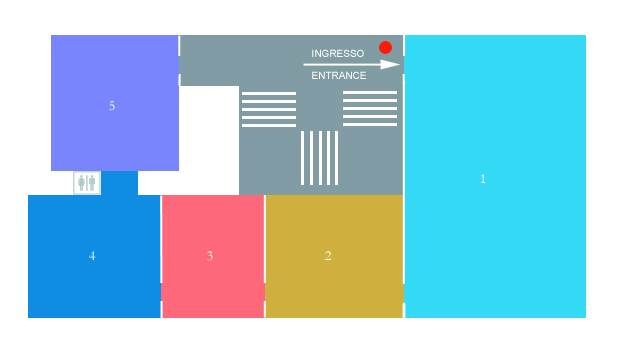
As of 1 July 2024 Palazzo Pepoli Campogrande is closed to the public for renovation and function-related upgrading. It is scheduled to reopen in spring of 2026.
Palazzo Pepoli-Campogrande is the satellite-seat of the Pinacoteca Nazionale, and is known even under the name of "Palazzo Pepoli Nuovo” (New), to differentiate it from the "Old" Palace, i.e. the XIVth century Home of the Pepoli family, just on the opposite side of the road. Built from the second half of the XVIIth century on behalf of Odoardo Pepoli, the new palace was intended as a modern and rich residence, appropriate to represent the social role of the family that, starting as textile merchants, and then money-changers and bankers, have become one of the most richest and important family of Bologna .
The building of the Palace began with the monumental staircase, large and elegant, conceived as a perfect set design for the elaborate ceremonial of the Baroque aristocratic society, that connects directly the entrance with the main floor. On tha vault, framed by rich stucco decoration, can be seen two oval frescoes by Domenico Maria Canuti (1665), depicting Taddeo Pepoli named Lord of Bologna and Taddeo Pepoli confirmed as vicar apostolic by the Pope.
The main floor, donated by Edvige Campogrande to the Bologna Municipality, and now managed by the Polo Museale dell’Emilia Romagna, houses a series of wonderful rooms frescoed by the main protagonits of the Bologna decoration painting, from the hal of the XVIIth century up to the beginning of the next century. Starting from the Main Hall with the triumphant Hercules' Apotheosis by Canuti, to the Felsina Room, with the gracious and well composed figures made by the Rolli brothers; from the Seasons and the Olympus rooms, where the playful Giuseppe Maria Crespi mixes up the the celebratory decoration with the genre painting ways, up to the elegant classicism of the Alexander Room by Donato Creti.
The spaces of the main floor house some of the paintings of the Zambeccari Collection, the rich collection donated at the end of the XVIII century by the Marquess Giacomo Zambeccari which enterd in the Pinacoteca collections in 1884.







